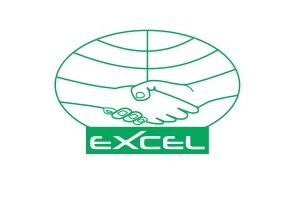Get A Quote
Get A Quote
+91

Home

Account

Get A Quote

About Us
Products
Materials
Contact Us
Connect with us
Get A Quote

Home

Account

Get A Quote

Stainless Steel DIN 1.4401 Plates comprise a unique combination of chemicals, including chromium, nickel, and molybdenum. One of the critical elements is B16, which provides corrosion resistance for the alloy. This is due to its ability to create a passive oxide layer on the surface. This protective and robust layer keeps stainless steel from rusting and increases its lifespan significantly. As it prevents corrosion, B16 helps make stainless steel more reliable in extreme environments and harsh conditions. Moreover, stainless steel has become acceptable across all industries due to its favorable properties and chemical composition. In addition to containing B16, other elements such as sulfur, oxygen, and nitrogen can be found in Stainless Steel DIN 1.4401 Plates.
SS DIN 1.4401 Plates offer a range of valuable properties that make them ideal for many applications. The superior corrosion resistance and strength of these plates mean they are often used in construction projects, from residential roofing to large structures like bridges and chemical processing plants. They are low maintenance, require minimal cleaning, and can be used in coastal areas such as docks, marinas, and even animal shelters. In addition to their strength, these plates retain their temperature well and can be used in moderate temperatures without risk of heat distortion or discoloration. Also, these plates are available in various shapes, sizes, and grades, which makes them highly customizable to meet any project's requirements. Stainless Steel DIN 1.4401 Plates offer an excellent blend of durability, strength, and performance, making them a popular choice among engineers and designers.
Stainless Steel DIN 1.4401 Plates comprise a unique combination of chemicals, including chromium, nickel, and molybdenum. One of the critical elements is B16, which provides corrosion resistance for the alloy. This is due to its ability to create a passive oxide layer on the surface. This protective and robust layer keeps stainless steel from rusting and increases its lifespan significantly. As it prevents corrosion, B16 helps make stainless steel more reliable in extreme environments and harsh conditions. Moreover, stainless steel has become acceptable across all industries due to its favorable properties and chemical composition. In addition to containing B16, other elements such as sulfur, oxygen, and nitrogen can be found in Stainless Steel DIN 1.4401 Plates.
SS DIN 1.4401 Plates offer a range of valuable properties that make them ideal for many applications. The superior corrosion resistance and strength of these plates mean they are often used in construction projects, from residential roofing to large structures like bridges and chemical processing plants. They are low maintenance, require minimal cleaning, and can be used in coastal areas such as docks, marinas, and even animal shelters. In addition to their strength, these plates retain their temperature well and can be used in moderate temperatures without risk of heat distortion or discoloration. Also, these plates are available in various shapes, sizes, and grades, which makes them highly customizable to meet any project's requirements. Stainless Steel DIN 1.4401 Plates offer an excellent blend of durability, strength, and performance, making them a popular choice among engineers and designers.






Clean the surface, use a TIG welding machine with argon gas, and use filler metal of the same grade as the plate.
Stainless Steel DIN 1.4401 Plate is also known as grade 316 stainless steel. To identify them, check for the stamp or label, and perform a magnet test (it should not be attracted to a magnet), or conduct a spark test (short red sparks with distinct bursts).
To test the quality of Stainless Steel DIN 1.4401 Plates, you can perform tests such as a tensile strength test, hardness test, corrosion resistance test, or impact resistance test. Professional testing may be required for critical applications.



















-1688635827661.webp)








No more suppliers available.
Website Banner